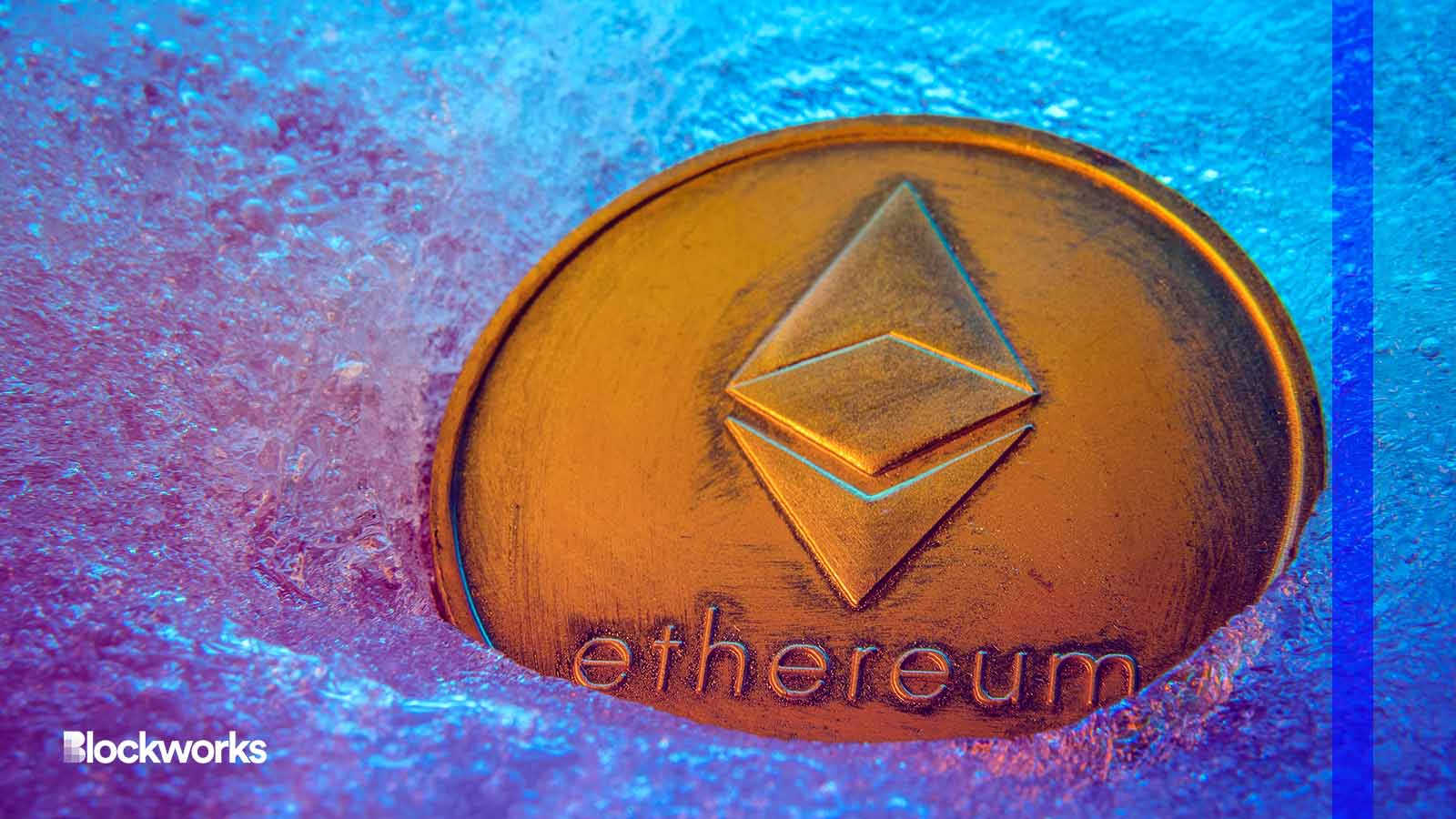Ethereum staked ready to flip ETH on crypto exchanges
The SEC’s ongoing crackdown seems to have pushed Ethereum investors to pull billions from exchanges this year — and staking even more

Ja Crispy/Shutterstock modified by Blockworks
Ethereum is fast approaching a very particular flippening.
No, ether (ETH) isn’t about to eclipse bitcoin (BTC) in terms of market cap (at least, not yet).
Instead, the raw number of ETH staked inside the Ethereum blockchain is set to surpass the ether kept on crypto exchanges for the first time ever some time over the next few weeks.
Earlier this week, there was 22.8 million ETH ($39.75 billion) completely staked compared to almost 24.3 million ETH ($42.38 billion) sitting on exchanges, per Nansen data analyzed by Blockworks. Each represents about 20% of ETH’s circulating supply.
- That worked out to be only 6.12% more ETH on exchanges than staked.
- At the end of May, that spread was almost 16%.
- At the start of the year, it was more than 41%.
Overall, there’s 4.9 million fewer ETH ($8 billion) on crypto exchanges than at the start of the year — a 17% reduction. And there’s 5.7 million more ETH ($9.4 billion) locked in the Ethereum blockchain over the same period, a jump of one-third.
The figures suggest the SEC’s persistent mudslinging has spurred Ethereum users to stake their ether rather than keep it on exchanges.
Ether stakers lock their tokens in the network to take part in consensus and earn yield, either by running validator nodes themselves or via services such as Lido.
Some crypto exchanges also offer staking-as-a-service products, however the SEC generally considers those to be unregistered securities. Ethereum staking yield is currently about 6% (paid in ETH).
More ETH staked now than during FTX scandal
Granted, crypto investors by far pulled the most ether throughout the FTX reckoning last November than at any point over the past 30 months.
Back then, net outflows from crypto exchanges averaged nearly 130,500 ETH ($227.1 million) per day, from when FTX went kaput to the end of that month.
Net outflows did surpass 200,000 ETH ($348.3 million) on June 5 — the same day the SEC sued Binance. A similar number was hit as Coinbase received its own lawsuit the following day. But they’ve since tapered off.
Net ether staked hovered between 69,600 ETH ($121 million) and 112,100 ETH ($195 million) in the days directly around those suits — roughly two-and-a-half times the daily average throughout the FTX collapse.
It is unknown whether the exact same ETH that was ripped from crypto exchanges ended up staked in Ethereum. In any case, net ether outflows from exchanges certainly spiked as the recent lawsuits hit newswires. But equal amounts haven’t flowed into the Ethereum blockchain.
For instance, interest in ETH staking peaked three days before the Binance case was revealed, with net staking inflows of around 397,700 ETH ($692.6 million) on June 2, the highest on record.
‘Not your keys,’ but make it yield
Still, it appears general sentiment has shifted more toward decentralized blockchain architecture than centralized platforms susceptible to regulatory persecution.
For instance, net staking inflows were also really high throughout May after jumping considerably after the Shapella upgrade activated withdrawals in April.
The May surge also came after Kraken unwound its ether staking-as-a-service program due to SEC threats received in February, and after Coinbase’s own Wells notice over similar services garnered in late March.
Coinbase CEO Brian Armstrong has said his firm wouldn’t unwind its Ethereum staking products in the same way as Kraken.
The number of ETH staked flipping crypto exchange balances is a reassuring sign that crypto users truly value the benefits of decentralized technology. “Not your keys” and all that.
It took less than two weeks for the spread between ETH on exchanges and ETH staked to drop from more than 16% to 6%.
If that trend continues, the staking-exchange flippening should hit by the end of this month.
Get the news in your inbox. Explore Blockworks newsletters:
- The Breakdown: Decoding crypto and the markets. Daily.
- Empire: Crypto news and analysis to start your day.
- Forward Guidance: The intersection of crypto, macro and policy.
- 0xResearch: Alpha directly in your inbox.
- Lightspeed: All things Solana.
- The Drop: Apps, games, memes and more.
- Supply Shock: Bitcoin, bitcoin, bitcoin.






